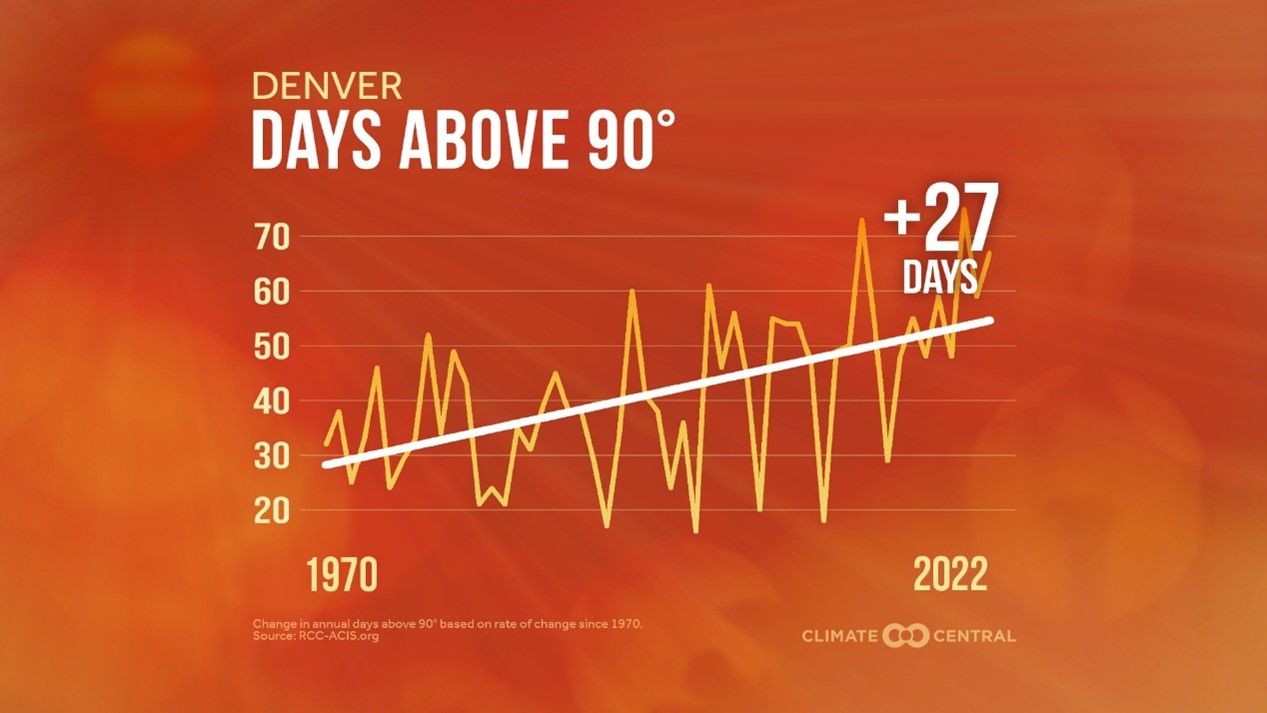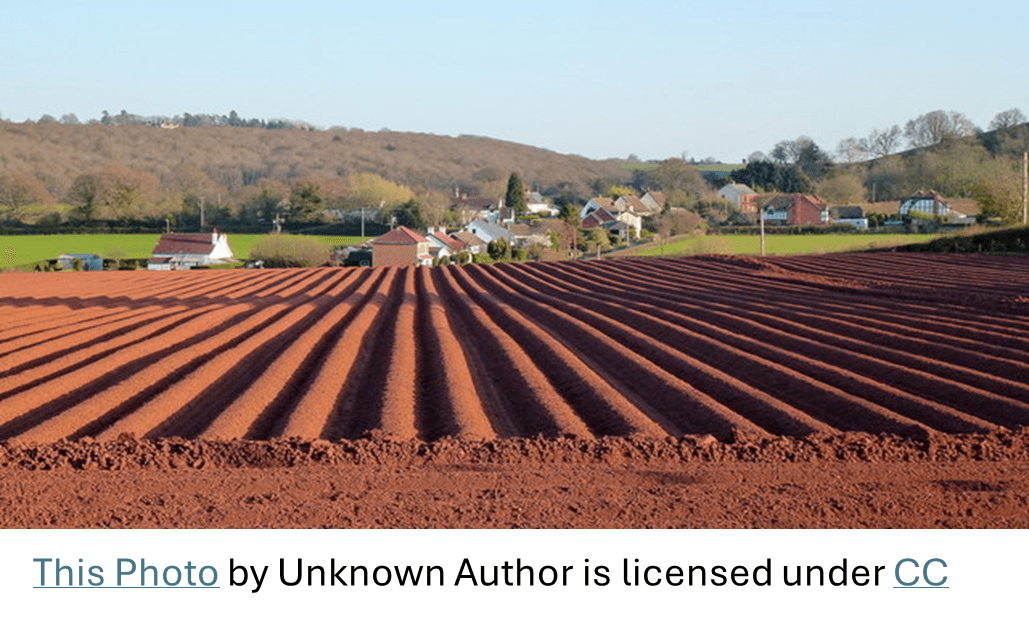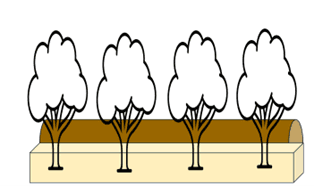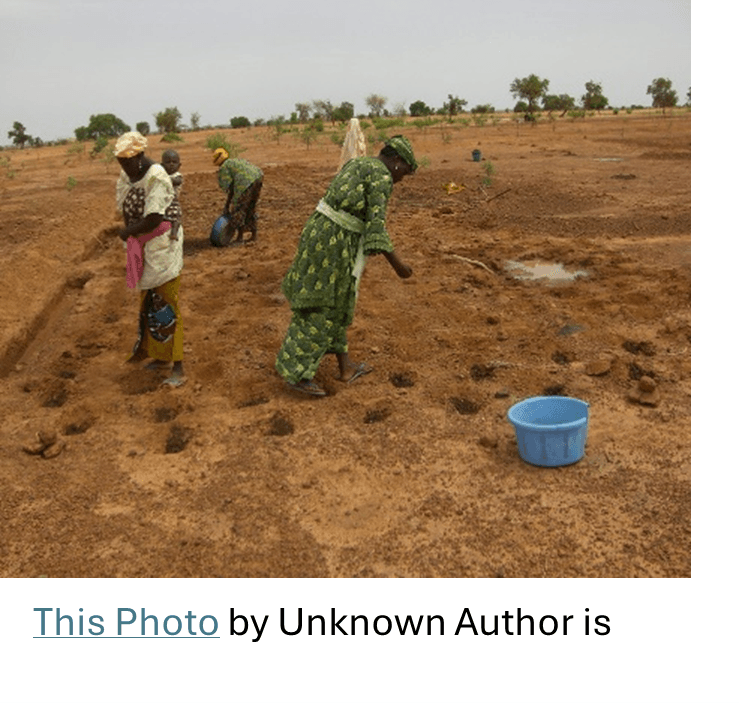What Can We Learn from Africa’s Great Green Wall?
What is the Great Green Wall?
Spanning over 8000km long with an average width of 10 km the Great Green Wall (GGW) is one of the most ambitious revegetation projects in human history (MegaProjects, 2024). The GGW is a remarkable initiative spearheaded by the United Nations’ World Food Program. Its primary objective is to prevent the expansion of the Sahara and the desertification of the area surrounding it. This initiative not only curbs the Sahara’s encroachment into neighboring communities but also transforms barren land into fertile, airable soil. This transformation brings life back to the soil and creates the job opportunities that come with thriving farmland. These communities, once losing their young working age population to large cities and agricultural jobs abroad, are now able to create agricultural jobs of their own.
With the closest portion of the Green Wall being over 5,000 Miles away can we learn anything from these efforts?
Why Should we Care?
While the problems of Africa may seem far away, the majority of Americans are facing an increasing number of hot days (days exceeding the 95th percentile of that location’s average maximum summer temperature rounded up to the nearest 5°F). Climate Central analyzed data on 241 locations, from 1980-2022 and 195 or 81% of these locations saw an increase in temperatures (Climate Central, 2024) . While to some, more hot days means a longer growing season, a joint policy brief that was a collaboration between the Environmental Defense Fund, Cornell Atkinson Center for Sustainability, and Kansas state university has determined that the decreases in yield and airable farmland will outweigh any benefits of a prolonged growing season. “Yields of major crops like corn, soybeans and wheat fall by 16% to 20% with every 1 centigrade increase” (Cornell, 2024) With the U.S. Population at 341 million and increasing we can’t afford to be losing yields and possibly even farmland to this change in climate.

So, what can we do to help preserve the land we have and possibly even convert currently unfarmed land into useful productive soil? What practices can we take away from this project?
Globally, farmers are struggling more each year to get the water they need for healthy, thriving crops. Desertification further compounds water issues to an extreme, making every drop of water count in the fight to maintain productivity. In the following sections we’ll be discussing some of the techniques used to take full advantage of every mm of rainfall.
Water Harvesting Features
As desertification takes place the soil becomes increasingly hard and compacted, becoming almost cement-like, stopping water from penetrating the surface. These conditions lead to flooding, soil that is unable to support life, and natural underground aquifers that can’t be replenished. To reclaim this land a foothold must be created for plant life. By digging planting beds into the soil, you can break apart soil compaction and provide a place for the land to store water instead of letting it run off. Keyline planting is a method where beds are planted along the contours of the land perpendicular to the natural flow of water across them, this allows the beds to capture and slow the flow of water; meaning more water will be absorbed and available to support plant life and replenish aquifers.

Half Moon
Half-moons are semi-circular pits, with diameters ranging from 2 to 6 meters, designed for water conservation. They are typically excavated on gentle slopes with an incline of less than 3%. The soil extracted during the excavation process is strategically placed along the curved edge of these pits, forming a furrow that can be reinforced with small stones.
These half-moons are systematically arranged in staggered rows, maintaining a spacing of four meters between each pit. This technique has proven to be particularly effective on nutrient-poor soils and is highly efficient in regions that receive less than 600 mm of annual rainfall.
The half-moon configuration depicted above represents just one of the many possible arrangements. Given the essential role of trees in the formation of a green wall, some configurations feature a tree at the center of the half-moon, surrounded by other native plants. Understanding the various configurations and their suitability to specific conditions is crucial for successful implementation.
Furrowed Rows

In contrast to conventional furrowed rows, areas with scarce rainfall can gain advantages from planting in the spaces between the furrows. This arrangement allows the furrows to act as buffers, slowing down the movement of water. The valleys formed between them serve as catchment areas, capturing water and directing it into the soil, and most crucially, to the roots of the plants. This method is particularly effective for traditional planting and vegetable production.
Terraces/Trenches

Terraces or Trenches are typically dug around 70 cm deep with a furrow on the downstream edge of the pit. This feature works especially well as a last water catchment in conjunction with Half-moons and Furrowed rows. The spacing of the half-moons allows some water to escape in between them, this water can then be carried across the furrowed rows into the trenches. With trenches being the deepest pits, they serve as a final catchment for the landscape.
Zai holes

This method involves the digging of pits, each approximately 30 cm deep and spaced at regular intervals. These pits are then filled with organic materials like compost or manure. Filling these pits provides plants in highly compacted soils with a nurturing environment to establish their roots. As the plant and its associated soil microbial community grow, they can gradually break up the surrounding compacted soil, improving its structure and fertility over time.
While these water harvesting features help to break up desertified soil, the plants used are just as important. The plant’s roots and the shade provided from its canopy do just as much as the water to help break up soil compaction and lower average soil temperatures.
Using Native Plants and Cultivating Biomass
Native plants, like sorghum and millet in Africa, have proven to be effective in the systems discussed so far. These and other native plants have an advantage over non-native species as they are adapted to the local climate. With commercially available varieties of these grains, these plants can thrive in their native habitats while providing increased resources for growers. Some of these plants have the added benefit of generating high levels of biomass, leading to pruned plant parts and crop residues returning to the soil. This enhances the soil's organic matter content, improves soil structure, and promotes beneficial microbial activity.
The pruning of these plants serves a dual purpose. They are used as mulch or made into compost, providing numerous benefits such as weed suppression, nourishment for soil microorganisms, and temperature and water management. The goal of these farming methods extends beyond the production of food and cash crops. It aims to rehabilitate and regenerate the land.
One of the pivotal tools in the belt of the World Food Project is forestry, with trees making up most of the “green” in the Green Wall. As of 2023 over 5 billion trees have been planted. In Niger alone 200 million trees have been planted rehabilitating 12.5 million acres of land (Hertsgaard, M., 2011) Over 55 Native species of tree have been chosen, with some trees such as Moringa, Neem, Baobab, and African locust that not only provide benefits for the soil but also provide economic value.
The importance of Soil Armor
While various practices are effective in reversing soil compaction, plants play a pivotal role in preventing further compaction. Plants act as soil armor to help soil maintain a moderate range of soil temperatures, keeping soil warmer in cold weather, and cooler in hot weather. One cause of soil compaction is rainfall on bare soils, but plants function as armor, absorbing the impact of the rain instead of bare soil, preventing compaction. Soil armor also limits the amount of sunlight available to weed seedlings, suppressing weed growth. Lastly, it provides a protective habitat for microbes, which help to build soil structure and solubilize nutrients. Once given a foothold, plants work hard to reverse the effects of desertification and prevent it from happening again, we just need to support their efforts by farming in a sustainably.
Summary
In conclusion, the Great Green Wall (GGW) of Africa, an ambitious initiative to combat desertification and restore fertility to barren lands, offers valuable lessons for the rest of the world. As we face increasing temperatures and the potential loss of arable land, the techniques employed in the GGW project provide a blueprint for sustainable land management and climate resilience.
The GGW’s water harvesting features, such as half-moons, furrowed rows, terraces, trenches, and Zai holes, demonstrate innovative ways to capture and conserve water, even in areas with scarce rainfall. These techniques not only prevent soil compaction and promote water absorption, but also create conducive environments for plant life, leading to the restoration of degraded landscapes.
The use of native plants and the cultivation of biomass are other key takeaways from the GGW. Native plants, already adapted to local climates, can thrive and generate significant biomass, which enhances soil structure, promotes microbial activity, and suppresses weed growth.
Finally, the concept of soil armor, where plants prevent further soil compaction and maintain moderate soil temperatures, is a crucial lesson. This practice not only prevents soil compaction but also provides a protective habitat for soil microorganisms, contributing to the overall health of the soil ecosystem.
In essence, the GGW offers a compelling case study of how targeted, sustainable land management practices can transform landscapes, improve livelihoods, and combat climate change. As we grapple with our own environmental challenges, these lessons from Africa’s Great Green Wall could guide us towards a more sustainable and resilient future.
Sources
More Extremely Hot Days | Climate Central. (n.d.). Www.climatecentral.org. Retrieved April 30, 2024, from https://www.climatecentral.org/climate-matters/more-extremely-hot-days-2023
Report: Warmer planet will trigger increased farm losses | Cornell Chronicle. (n.d.). will-trigger-increased-farm-losses
MegaProjects (n.d.) Africa’s Great Green Wall: Stopping the Spread of the Sahara. Www.youtube.com. Retrieved May 9, 2024, from https://www.youtube.com/watch?v=ZABIV7RhY2o&t=933s
Hertsgaard, M. (n.d.). The Great Green Wall: African Farmers Beat Back Drought and Climate Change with Trees. Scientific American. https://www.scientificamerican.com/article/farmers-in-sahel-beat-back-drought-and-climate-change-with-trees/
start your soil journey today
contact us